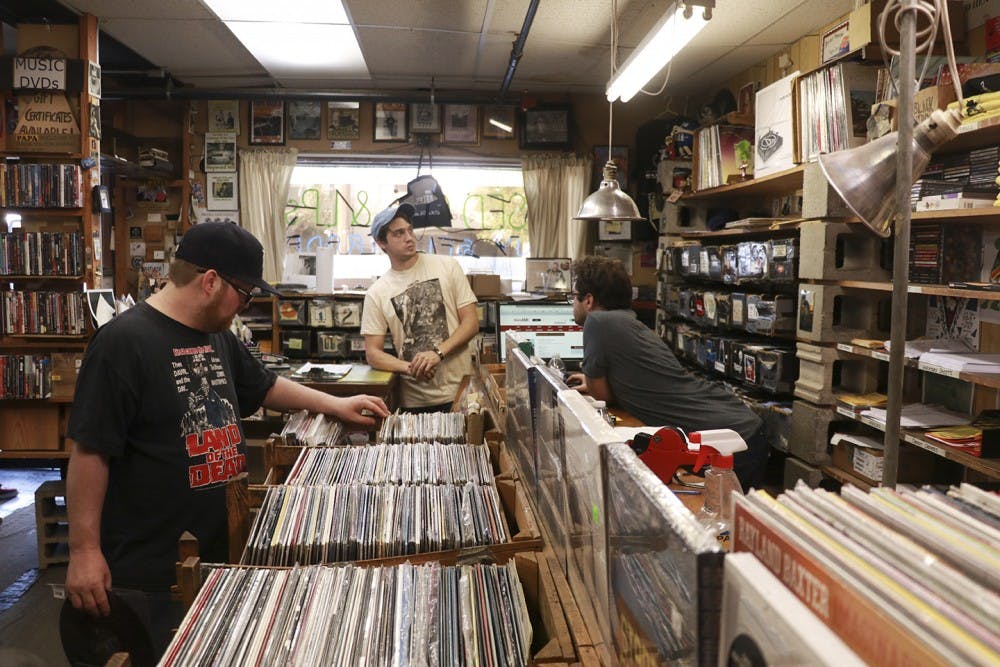As I write this very sentence, I'm wearing headphones, blaring Weezer’s new album on Spotify. Streaming has become the standard for people to get hold of their favorite music. The number of streams so far in 2017 has increased 62.4 percent from last year. With so many options like Spotify, Apple Music, Pandora, Tidal and YouTube, access to thousands of songs for a few bucks a month is no longer the fantasy that music nerds had way back in the '90s.
But with streaming's convenience and popularity soaring, physical album sales have steadily decreased over the years. Physical albums can cost around $10, which is about the same amount the average person pays for a month of Spotify. One might have 12 songs and another has over 100,000. On paper, it's no contest as to which makes the most financial sense, but even though physical album sales have been in hot water recently, I am here to defend their importance in music and how there is still hope for them for the future.
Vinyl records used to be how a majority of people listened to music for most of the 20th century. You could finally listen to music in the comfort of your home or at a restaurant without people playing instruments or singing needing to be present. You only needed a little bit of plastic to hear an entire symphony.
As time passed, so did technology. By the 1980s, the CD had changed everything. Vinyl could be bulky and hard to transport, but with CDs you could listen on the go in your car or Walkman. At the time, CDs were the highest level of convenience to listen to music just like records used to be. Well into the new century, that no longer seems to be the case. Streaming is now the king, and it seems like it will stay like that for awhile until a new listening platform is established to dethrone it.
Even though physical albums are no longer the standard source of listening to music, they can still be vital for a massive audience to enjoy.
Digital sales take up a majority of music consumption, but physical music is still being listened to in droves. Over 100 million CDs were sold in 2015, and though this is fewer than sales from years past, its number shows that there is still a large audience that still sees CDs as an important source of how they listen to music.
One of the the best ways to listen to a CD is by blasting it in your car while driving. In 2015, it was reported that there was a seven percent increase from 2014 of used in-dash CD players for cars. Instead of just using an aux cord to listen to a random playlist, maybe taking the time to buy a CD makes it more personal for someone, which can make it a better listening experience for them.
Over the past decade, there has been a resurgence in popularity in vinyl sales. There is even a Wikipedia page about this trend.
The way you are able to listen to vinyl may be one of the reasons sales have increased.
“I think that it’s a different listening process", said Alex McCollum, an employee at Papa Jazz Record Shoppe in Five Points, about vinyl records. “It’s much more active as opposed to just kinda putting on one track of a digital download, you have to actually flip the record halfway through.”
The size and design of vinyl can also be a factor for their growing appeal.
“They’re like these little miniature art pieces that look really cool. I’d be lying to you if I didn’t tell you that the first reason I started buying records was just 'cause they were incredible to look at ... They’re nice to hold in your hands,” McCollum said.
McCollum said that Papa Jazz’s total sales are about 60 percent vinyl and 40 percent CDs. Whenever some new albums are released, it comes out as both vinyl and CD so it can reach as large a market as possible. Purchasing vinyl and CDs both have benefits that don’t come with streaming. Both vinyl and CDs usually come with additional booklets with liner notes, transcribed lyrics and other idiosyncrasies that the artist has left in there. You also help the artist financially by directly buying his album instead of streaming it, which has been controversial in regards to reimbursing artists for their own music.
Going forward, it’s hard to get a clear picture of where music consumption is headed. To some, CDs will always have sound quality that is hard to beat, and vinyl has the nostalgia factor in its favor. Streaming will continue to be the number one source for music, but like paper books compared to e-books, it’s hard to beat that feeling of holding a CD or vinyl record in your hands. Peeling the plastic off a new CD or vinyl record is one of the those sweet feelings that anyone can relate to. CDs and vinyl still bring music to you in a more personal way that Spotify lacks. It may not be the easiest way to listen to music anymore, but physical albums are something that should not be ignored in the music industry and especially not by the fans.

